Easy halal emergency food in Japan #1
Salam and hello!
I’m back with another halal Japanese emergency food review. This time is halal Japanese emergency food by Onisi Foods.
There are 6 products and I will introduce them in 2 parts. The first part that we will look today is the Ethnic series: Nasi Goreng and Biryani.
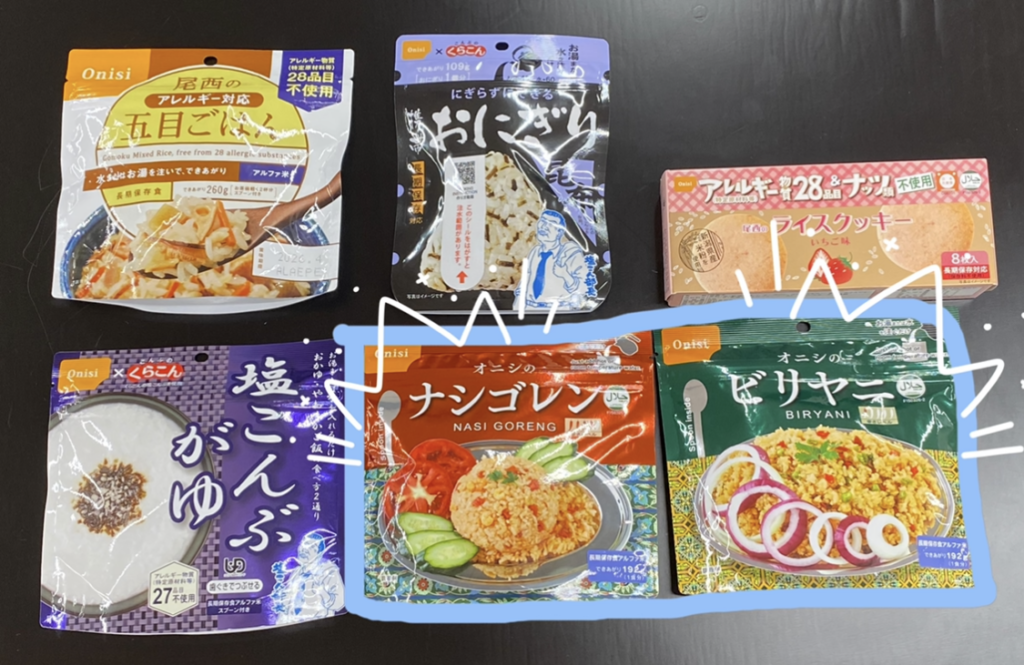
These products are a pretty new addition to the Onisi Foods emergency food series as it came out last year. I knew them because we (Salam Groovy Japan) also published an article about it on our website [link down below]. It said that the products recreated the authentic, ethnic flavours of those dishes.
Let’s find out how authentic they are.
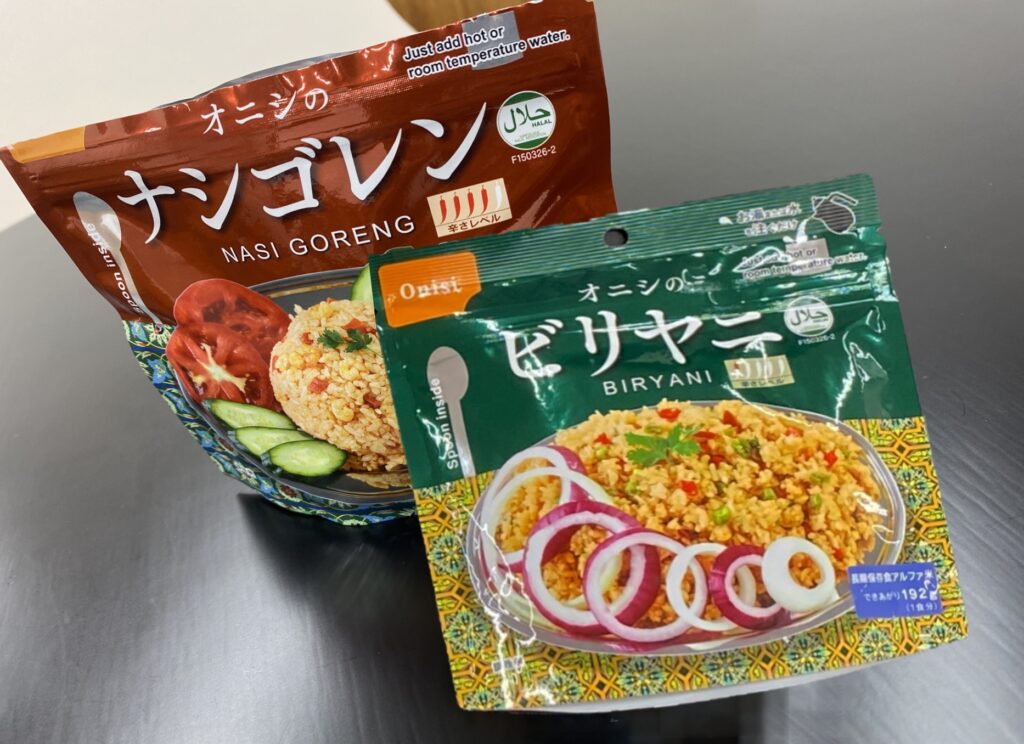
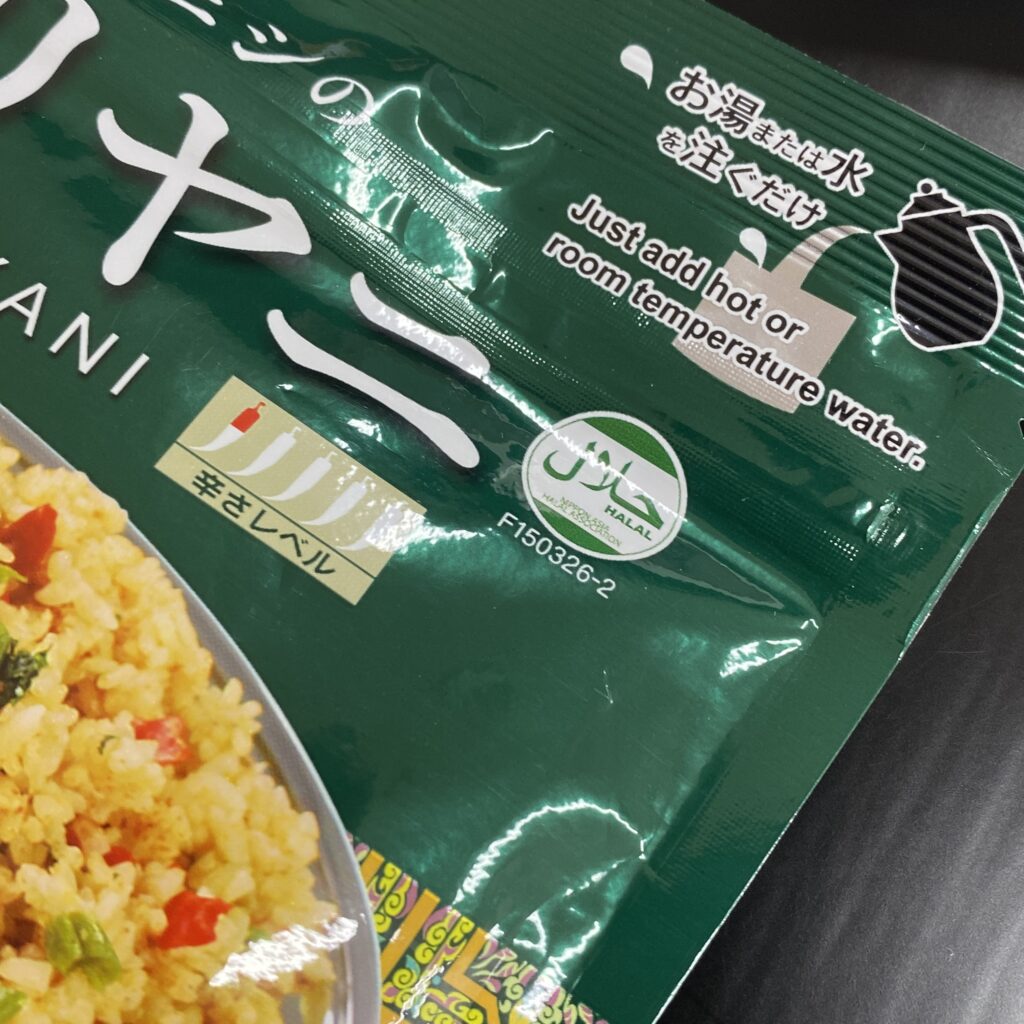
How to Prepare the Emergency Food (Nasi Goreng/Biryani)
1. Open the bag. Take out the seasoning packet, spoon and oxygen absorber. *DO NOT eat the oxygen absorber

2. Put the seasoning into the bag and mix well.
3. Pour water or hot water until the indicated line
4. Seal the bag tightly. Wait 15 minutes (if you pour hot water) or 60 minutes (if you pour room temperature water).
5. After 15 or 60 min., mix well from the bottom before eating to ensure everything is evenly mixed with the seasoning. ENJOY!!

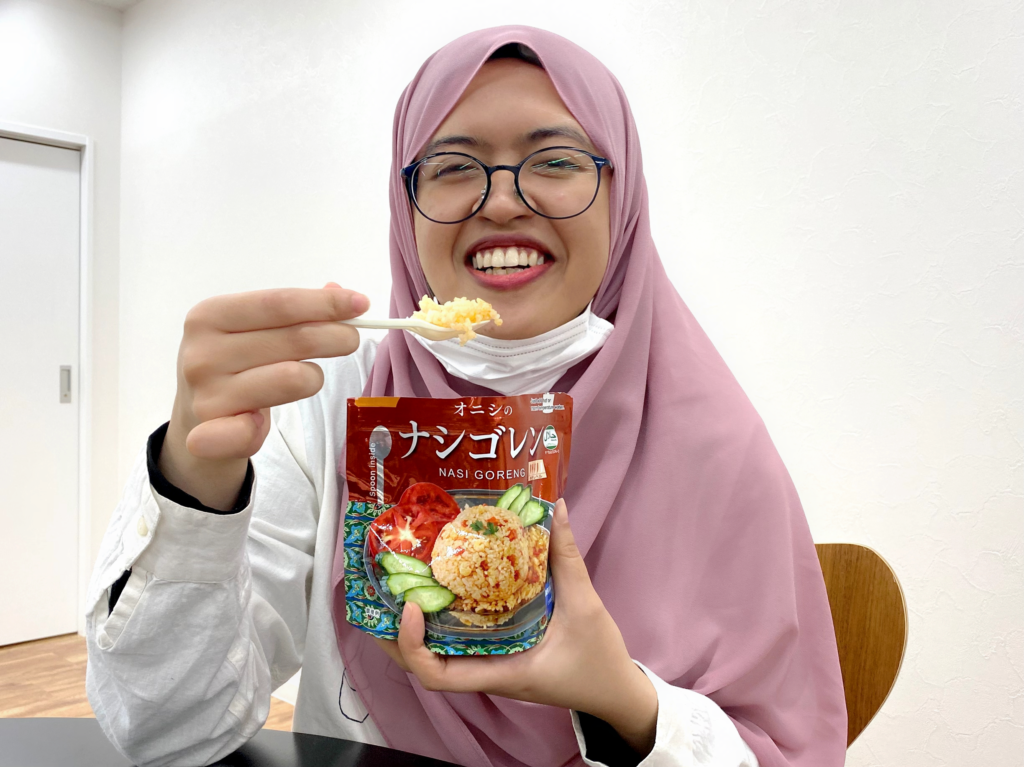
You can also check the cooking instructions by scanning the barcode at the back of the packaging. Available in English, Korean, Chinese, Arabic and Indonesian.
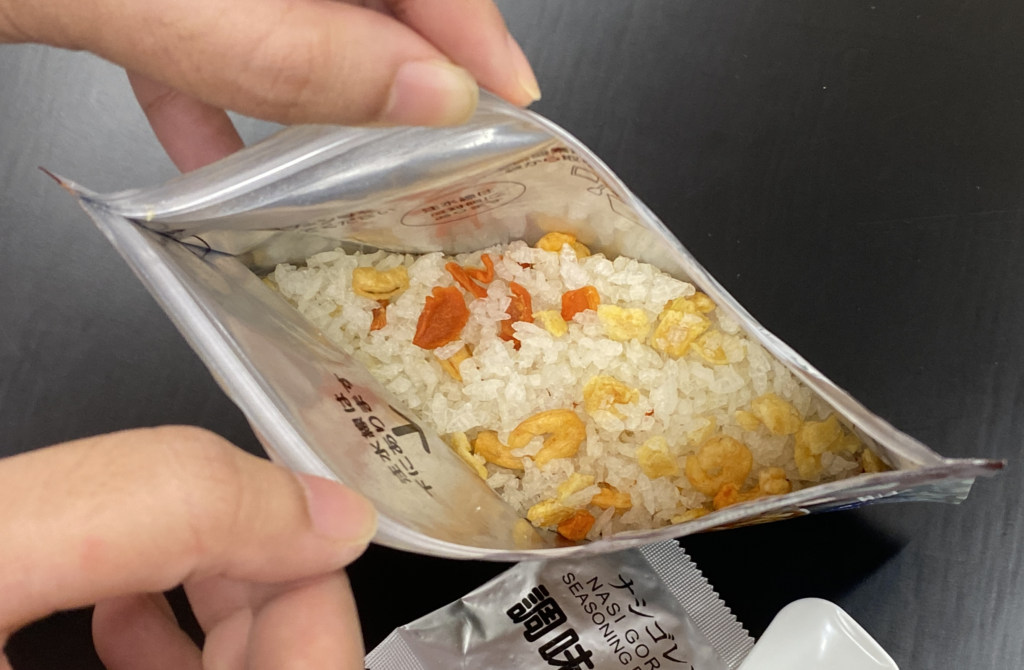
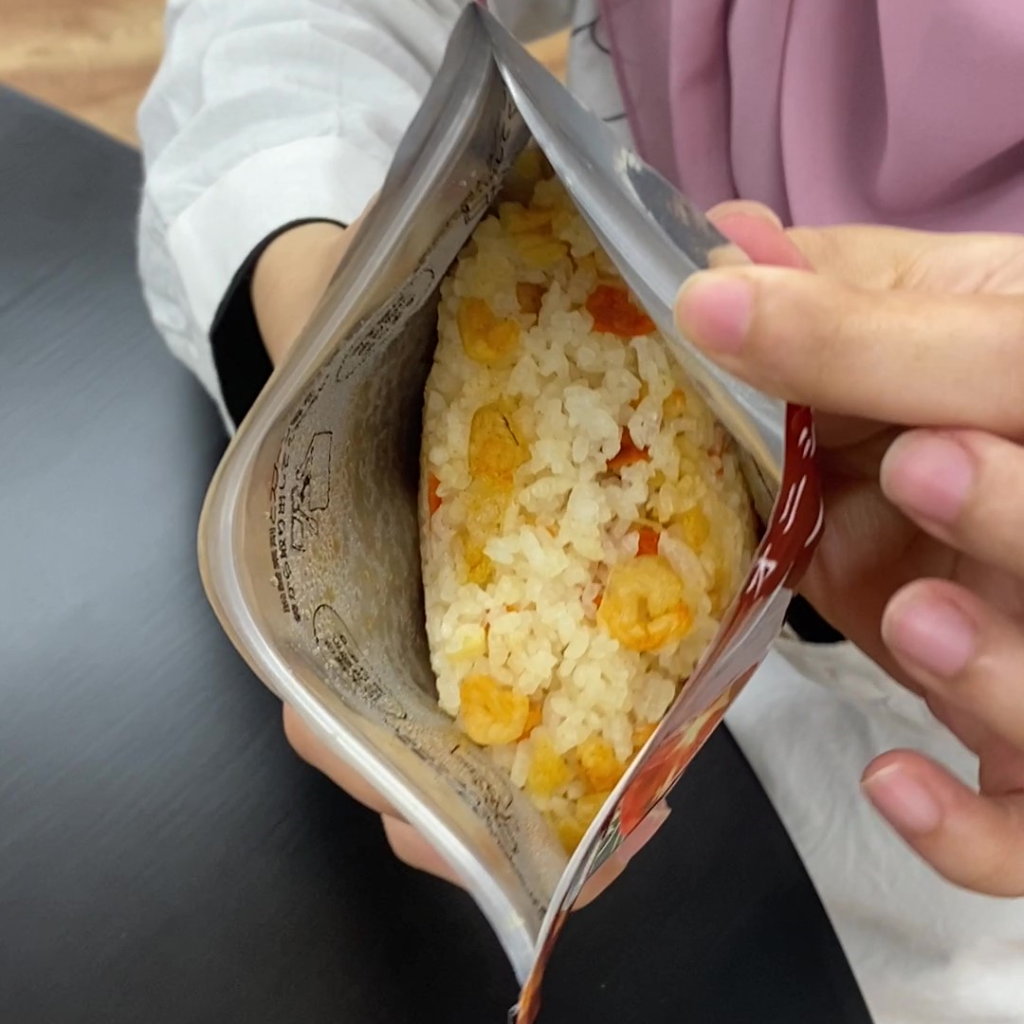
Nasi Goreng (Malay/Indonesian) literally means fried rice, Nasi=rice and Goreng=fry. Indonesia, Malaysia and other Malay-speaking countries have many varieties of Nasi Goreng. Onishi’s is a simple Nasi Goreng without kicap/kecap (sweet soy sauce). It looked pretty similar to the picture on the packaging.
The spiciness is supposed to be level 4, but for me, it’s maybe about level 1 or 2. Spicy enough that my tongue can gradually feel the heat. Makes me go “ssss” a bit, not the level to make me need water or milk every second. If you have tried cili padi (Thai chilli, bird eye chilli), I think it would be like fried rice cooked with about 3 of that chillies.
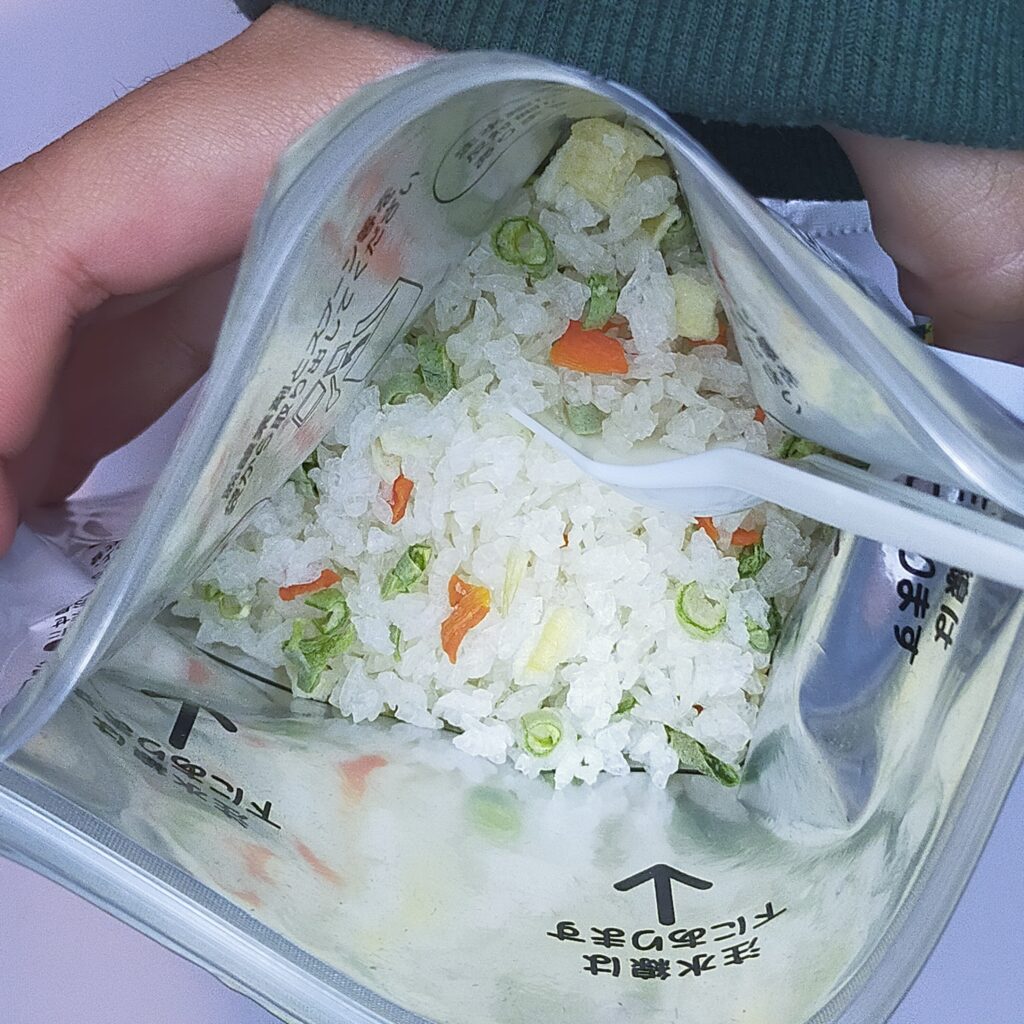
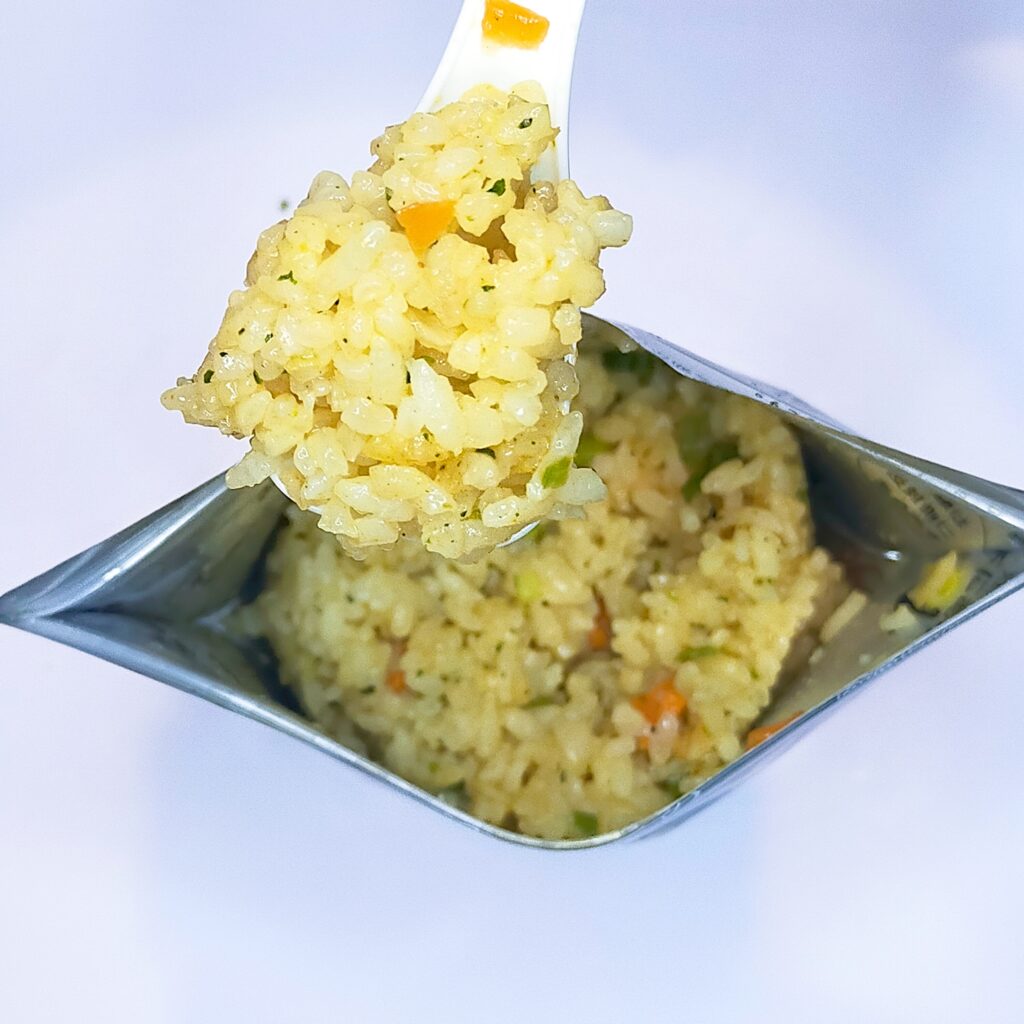
The Biryani is aromatic. It smells exactly like a real Biryani. You can really smell the spices, especially the star anise, I think. I’m not sure if I got the spice right because it’s been a while (lol). In Japan, some spices–easily found in Malaysia–can be hard to get, so I don’t use them much.
Basically, the smell is not strong enough that you will keep smelling it as you eat.
I’m used to eating Biryani with side dishes, such as chicken or beef. So, it felt a bit boring without them. But I did like the hint of black pepper here and there. It’s not bad.
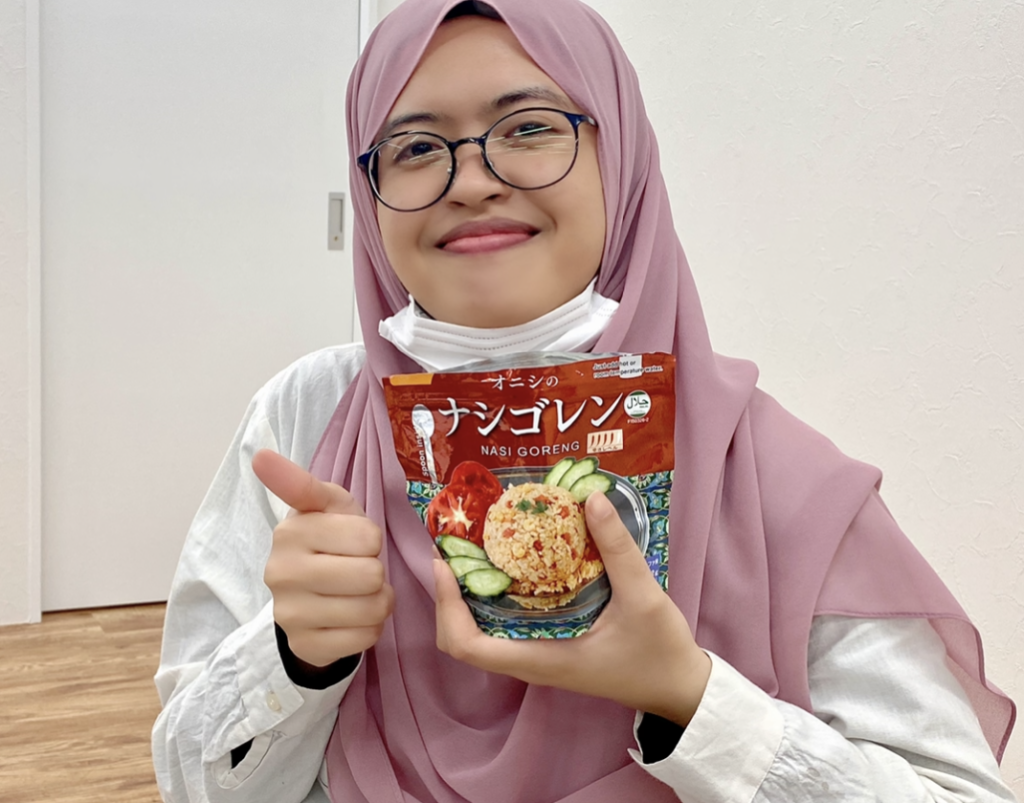
Both are surprisingly better than I expected. The company did a great job of recreating the flavours. Pretty close to the real dishes.
Out of the 2, I liked Nasi Goreng more because it was spicier. Make sure you mix them really well before you eat. I didn’t mix too well, so it was saltier at the bottom. Definitely would try again!
Part 2 of Onisi Foods review coming soon. Stay updated!!
Related Article:
Emergency Survival: Halal Nasi Goreng & Biryani To The Rescue
Halal Japanese emergency food review, My first try
Easy halal emergency food #2
We have a network of Japanese companies keen to expand into the Halal market in Malaysia & Indonesia.
If you are interested in connecting with sustainable technology companies in Japan, simply JOIN the network from below. We will match the right one for you!




